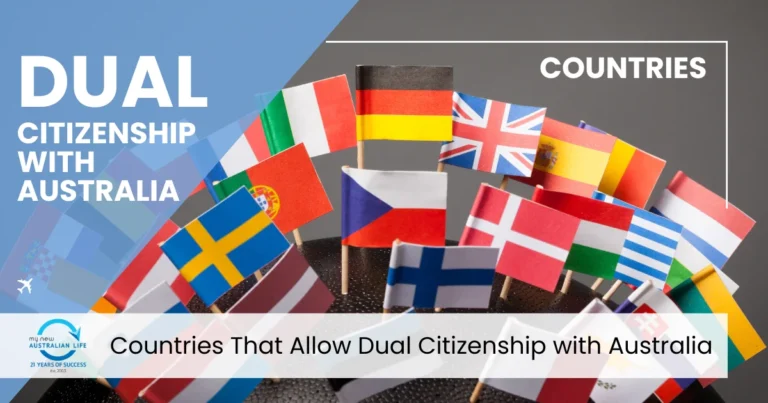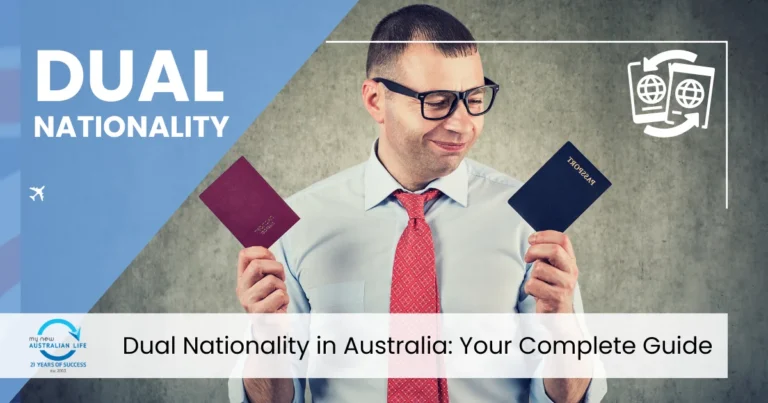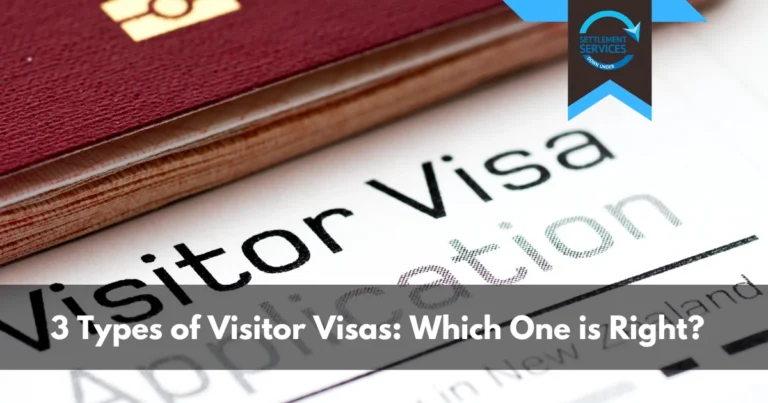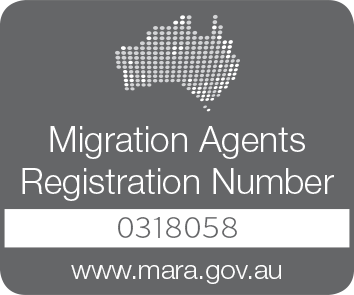Family & Partner Visa Cost (Subclass 820, 309, 101, 143) – For Those with Family in Australia
Australia has long been recognized as a destination that values family connections and supports reunification through its immigration programs. The Family and Partner Visa program caters to individuals seeking to join their loved ones in Australia. These visas are specifically designed for partners, children, and parents of Australian citizens.
| Visa Subclass | Cost Breakdown (AUD) |
|---|---|
| Subclass 820 (Onshore Partner Visa) | $9,095 (Main Applicant) $4,550 (Additional Applicant 18+) $2,280 (Additional Applicant Under 18) |
| Subclass 309 (Offshore Partner Visa) | $9,095 (Main Applicant) $4,550 (Additional Applicant 18+) $2,280 (Additional Applicant Under 18) |
| Subclass 101 (Child Visa) | $2,710 (Main Applicant) |
| Subclass 143 (Contributory Parent Visa) | $4,765 (First Installment) $43,600 (Second Installment) (Same cost applies for additional applicants) |
The cost of an Australian Partner Visa varies depending on the visa subclass, with fees set by the Department of Home Affairs. As of 2025, the application fee for both the Subclass 820 (Onshore) and Subclass 309 (Offshore) Partner Visas is $9,095 for the main applicant. If additional family members are included in the application, an extra $4,550 is required for dependents over 18, and $2,280 for dependents under 18. The Subclass 101 Child Visa, designed for dependent children of Australian citizens or permanent residents, costs $2,710. For parents seeking to join their children in Australia, the Subclass 143 Contributory Parent Visa has a two-stage payment process, with an initial fee of $4,765, followed by a second installment of $43,600 before visa grant. These fees cover processing costs and are subject to change based on government policy updates. Given the substantial financial commitment, applicants should ensure they meet all eligibility requirements before lodging their application.
With visa subclasses like 820, 309, 101, and 143, the Australian government ensures that families can reunite and thrive together. Whether you’re looking to bring your partner to Australia, sponsor your child, or invite your parents to join you, these visa options offer a pathway tailored to your needs.
Visa Categories (Subclass) Explained
Subclass 820 – Partner (Temporary) Visa
The Subclass 820 visa is ideal for individuals already in Australia who are in a committed relationship with an Australian citizen, permanent resident, or eligible New Zealand citizen. This temporary visa provides a stepping stone toward obtaining permanent residency through the Subclass 801 visa, ensuring you can stay in Australia with your partner while the permanent application is processed.
The 820 visa is often chosen by those who have already established a life in Australia and want their partner to join them. It provides work and study rights, making it easier to integrate into Australian society while waiting for the outcome of the permanent visa application.
- Eligibility Criteria:
- Demonstrate a genuine and continuing relationship with your partner.
- Provide evidence of living together or supporting each other financially and emotionally.
- Meet health and character requirements as outlined by the Department of Home Affairs.
Subclass 309 – Partner (Provisional) Visa
If you’re outside Australia and in a committed relationship with an eligible sponsor, the Subclass 309 visa might be the best choice. This visa allows you to join your partner in Australia temporarily while transitioning to the Subclass 100 visa, which grants permanent residency.
The 309 visa offers a valuable opportunity for partners who have been separated by geographical barriers to reunite. By applying from outside Australia, applicants can begin the process of building a life with their sponsor, benefiting from travel rights while awaiting the outcome of the permanent application.
- Eligibility Criteria:
- You must apply for this visa from outside Australia.
- Evidence of a genuine and ongoing relationship with your Australian partner is required.
- Your sponsor must meet character and financial requirements.
Subclass 101 – Child Visa
The Subclass 101 visa is a permanent visa designed to help dependent children of Australian citizens, permanent residents, or eligible New Zealand citizens join their parents in Australia. This visa is suitable for children under 18 or those financially dependent on their sponsoring parent due to specific circumstances, such as disability or education.
For families with children living overseas, the 101 visa ensures that loved ones can be together and that children have access to the benefits of Australian residency, such as education and healthcare. The application process emphasizes the child’s dependency and the relationship with the sponsoring parent.
- Eligibility Criteria:
- The child must be dependent on the sponsoring parent.
- Must be outside Australia at the time of application.
- Meet the health and character requirements.
Subclass 143 – Contributory Parent Visa
The Subclass 143 visa provides a pathway for parents of Australian citizens or permanent residents to reunite with their families in Australia. Unlike other parent visas, the 143 visa has shorter processing times but comes with a higher financial contribution. This visa offers parents permanent residency, granting them the ability to live, work, and access public services in Australia.
This visa is ideal for parents who meet the balance of family test, meaning that at least half of their children live in Australia. It’s a popular choice for families willing to invest in faster reunification, ensuring parents can spend their golden years with loved ones.
- Eligibility Criteria:
- Meet the balance of family test, with at least half of your children residing in Australia.
- Provide an assurance of support to ensure you won’t rely on welfare.
- Be outside Australia when lodging the application.
Costs and Processing Times
| Visa Costs | AUD 8,085 (as of latest update) |
|---|---|
| Processing Time (820) | 15 to 28 months |
| Processing Time (801) | Varies; processed after 820 approval |
Note: Fees are subject to change; additional costs may apply for health checks, police clearances, and translations.
Application Process
Step 1: Determine Eligibility
Understanding the eligibility criteria for each visa subclass is crucial. Factors such as your relationship, location, and financial capability will determine which visa to apply for. For example, Subclass 820 is ideal for onshore partners, while Subclass 309 caters to offshore applicants.
Step 2: Gather Documentation
Proper documentation is key to a successful application. For partner visas, this may include proof of shared financial responsibilities, photos, travel history, and joint commitments. Parent visa applicants should prepare financial guarantees and evidence supporting the balance of family test.
Step 3: Lodge the Application
Applications must be submitted online via the Department of Home Affairs website. Ensure all required forms and documents are complete before submission to avoid delays.
Step 4: Complete Health and Character Checks
All applicants must meet Australia’s health and character requirements. This involves medical examinations and obtaining police clearance certificates.
Step 5: Await the Outcome
Processing times vary widely depending on the visa subclass, with parent visas often taking longer. Staying informed about your application status is crucial during this period.
Common Challenges and Tips
- Demonstrating Genuine Relationships
- Collect extensive evidence, such as joint bank statements, shared leases, and personal declarations.
- Be prepared to provide additional information if requested during the assessment.
- Financial Contributions for Parent Visas
- Understand the financial commitments for contributory parent visas and plan accordingly.
- Consider professional advice to navigate the assurance of support requirements.
- Dealing with Long Processing Times
- Partner and parent visa processing can be lengthy; apply early to avoid delays.
- Use bridging visas to remain in Australia legally during the processing period.
Reuniting with family in Australia is a life-changing opportunity, and the Family and Partner Visa program is designed to make this possible. Whether you’re applying as a partner, parent, or child, these visa options provide the chance to live, work, and thrive in Australia alongside your loved ones.
If you’re ready to start your application, visit the Department of Home Affairs website for more details or seek guidance from a qualified migration agent.
Benefits of Family & Partner Visas
Family and Partner visas come with a range of benefits that enhance the applicant’s quality of life while fostering family connections:
- Reunification: These visas ensure that families can live together without geographical barriers.
- Work and Study Rights: Many temporary visas grant access to the Australian workforce and education system.
- Pathway to Citizenship: Permanent visas under this program allow applicants to eventually apply for Australian citizenship.
- Access to Services: Permanent visa holders can access Medicare, Australia’s healthcare system, and other essential services.
Comparison Table
| Visa Subclass | Key Details |
|---|---|
| 820 | Partner (onshore); Temporary, leading to Subclass 801 permanent residency. |
| 309 | Partner (offshore); Temporary, leading to Subclass 100 permanent residency. |
| 101 | Permanent child visa; For dependent children of Australian residents. |
| 143 | Contributory parent visa; Permanent residency with shorter processing times. |
Partner Onshore vs Offshore Applications
Partner Onshore Application:
An onshore application refers to applying for the Partner Visa while you are physically in Australia. In this case, you will apply for the Subclass 820 (temporary) and Subclass 801 (permanent) visas together. Applicants are typically granted a Bridging Visa, allowing them to stay in Australia while their application is being processed.
Key Points:
- You must be in Australia at the time of application and when the visa is granted.
- Provides access to Medicare and work rights while on a Bridging Visa.
Partner Offshore Application:
An offshore application refers to applying for the Partner Visa while you are outside Australia. In this case, you apply for the Subclass 309 (temporary) and Subclass 100 (permanent) visas together.
Key Points:
- You must be outside Australia at the time of application and when the Subclass 309 visa is granted.
- Once granted, you can travel to Australia and apply for the Subclass 100 permanent visa.
FAQs
1. Can I include my children in the application?
Yes, dependent children can be included in your application, but additional documentation will be required to prove their relationship to you.
2. What happens if my relationship ends during the visa process?
If your relationship ends, it could affect your visa application. However, there are exceptions for victims of domestic violence or if you share custody of a child.
3. Can I travel overseas while on the Subclass 820 visa?
Yes, but you will need to apply for a Bridging Visa B (BVB) to leave and return to Australia.
4. How do I transition to the Subclass 801 visa?
You will need to provide updated evidence of your ongoing relationship two years after lodging your initial application.
Related Posts

Countries That Allow Dual Citizenship with Australia
Reading Time: 4 minutesAustralia is known not just for its stunning landscapes and vibrant cities, but also for its progressive and flexible immigration

Dual Nationality in Australia
Reading Time: 5 minutesDual nationality, also referred to as dual citizenship, is the legal status of being a citizen of two countries simultaneously.

3 Types of Visitor Visas: Which One is Right for You?
Reading Time: 4 minutesWhen planning a short-term trip to Australia, whether for a holiday, to visit family, or conduct business, choosing the right

